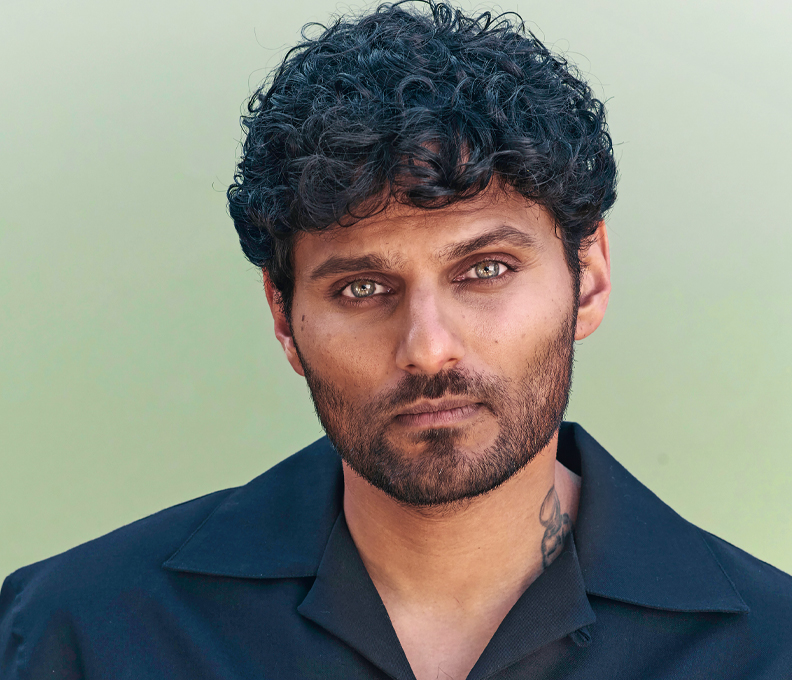Thomas Heatherwick Isn’t an Architect—But He’s Redesigning the Future of Cities
Acclaimed designer Thomas Heatherwick creates joyful structures that stimulate and engage people around the world
May 15, 2025
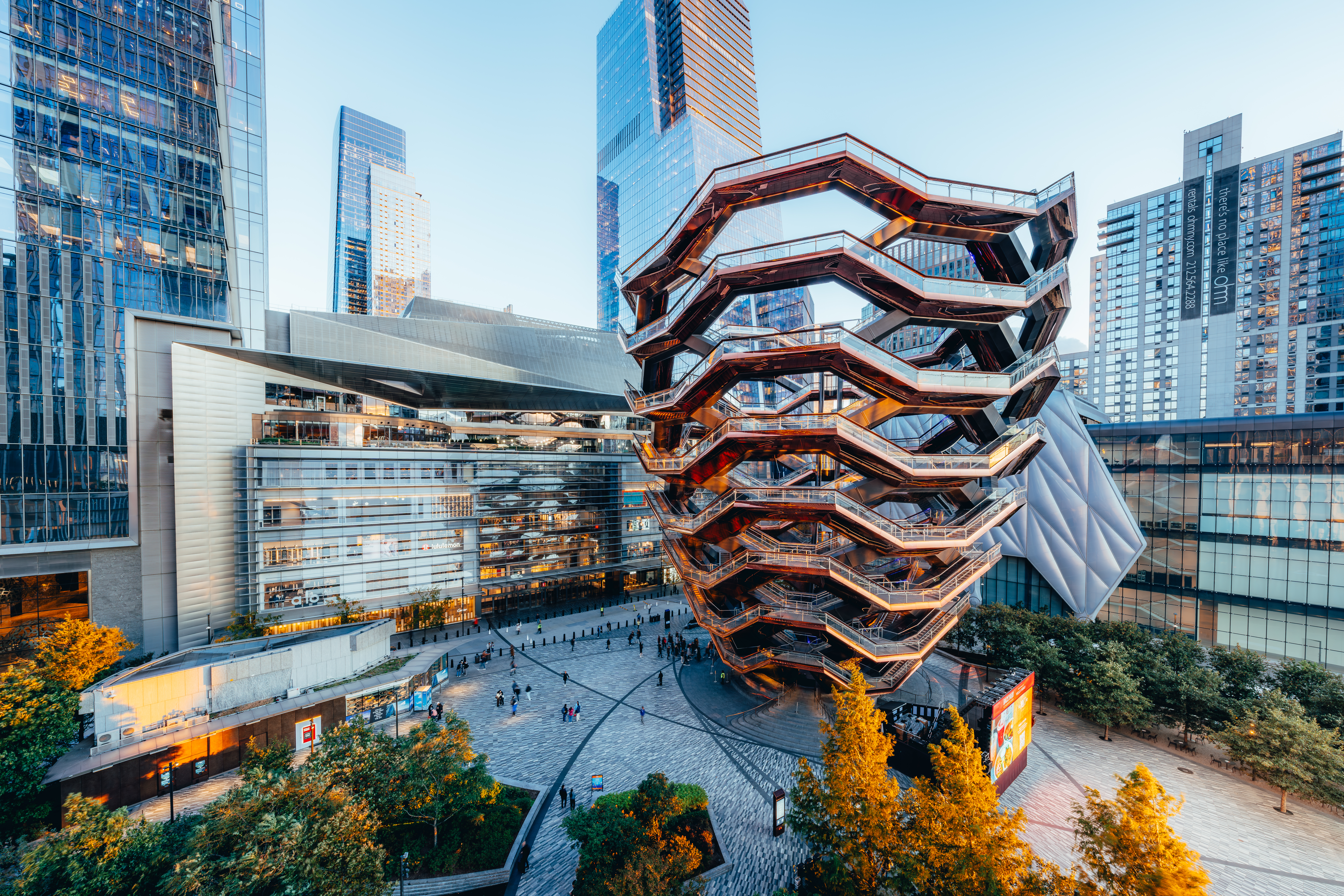
Photo: Courtesy of GettyImages
When is an architect not an architect? Thomas Heatherwick has designed Azabudai Hills in Tokyo, the Bund Finance Centre in Shanghai, the Google offices in King’s Cross in London, and Little Island in New York’s Hudson River Park, and is now reconfiguring the iconic 1960s London landmark the BT Tower as a luxury hotel.
The 55-year-old designer is behind some of the most talked-about buildings of the last 20 years, but significantly and legally isn’t an architect himself. He does, however, have a lot to say about them. In his 2023 book, Humanize: A Maker’s Guide to Designing Our Cities, Heatherwick explains why he thinks the last 100 years of city planning have been tainted by the role of the qualified architect, working as gatekeepers with their legally protected title, “seeing themselves as artists,” fixated with “the craze of modernism,” and ultimately responsible for “boring” buildings.
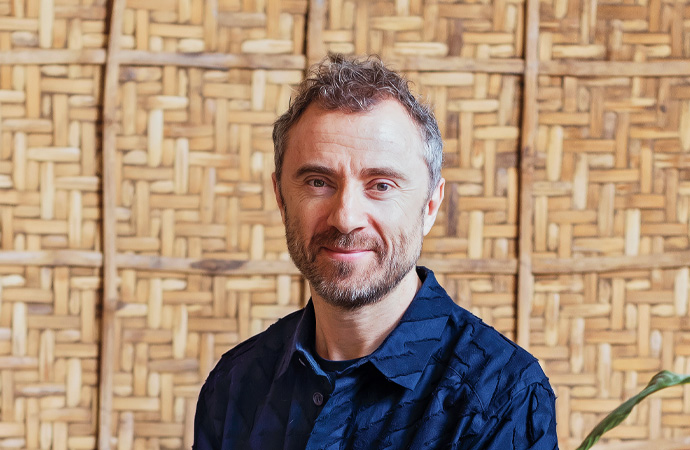
Thomas Heatherwick / Photo: Courtesy of Raquel Diniz/Heatherwick’s Studio
Heatherwick wasn’t given a smooth ride when he published Humanize, but even slavish devotees of Le Corbusier (“the king of boring”) had to admit he was on to something. We all find joy in visual complexity, and there are too many dull buildings around. Their impact has been a downer, the polar opposite of Stendhal syndrome. So what’s going on and what’s the solution?
“I’m not saying we need to fill the world with Bilbao Guggenheims and Sydney Opera Houses,” he tells me, upstairs at his London studio close to the gloriously ornate Victorian Gothic St Pancras station. “I am a modernist. I’m not suggesting we go back to the past. But modernism started to treat the public as ignorant. Four-hundred homes leading off a single walkway is crazy dysfunctional. Detail is eradicated and there’s nothing to nourish you.”
Heatherwick wants to see a Humanize-geared movement in architecture similar to the change in public awareness about eating well. “Over the last 30 years we have had a pushback against food that we know isn’t good for us,” he explains. “People realized they aren’t powerless. We need to start having national conversations. Our industry likes to speak to itself and use jargon. I have every confidence that if we have a conversation, people will say they want more generous buildings, which isn’t to mean old-fashioned. When you create a building, you have two clients—the clients themselves and the public. I am in public service.”
Gaining Visibility
Heatherwick rose to fame creating sensational structures with vibrancy and depth. He struck a chord with the public. So much so, he was short-listed to design the Queen Elizabeth II Memorial earlier this year (the decision will be announced in 2026). He says he rails against repetition, but there’s a distinct energy hardwired into his work, from undulating, serpentine silhouettes to kinetic elements that date back to his pedestrian Rolling Bridge that opened on London’s Grand Union Canal in 2004—modest in scale but a thrilling design that curls and uncurls.
He bemoans the straight lines and voids inherent in much modern architecture. Gaudí is his god, and god is in the details. Heatherwick is all about primal childlike excitement and moments: More than 900 million people watched 204 flaming “petals” come together on his Olympic Cauldron during the opening ceremony of the Games in 2012.
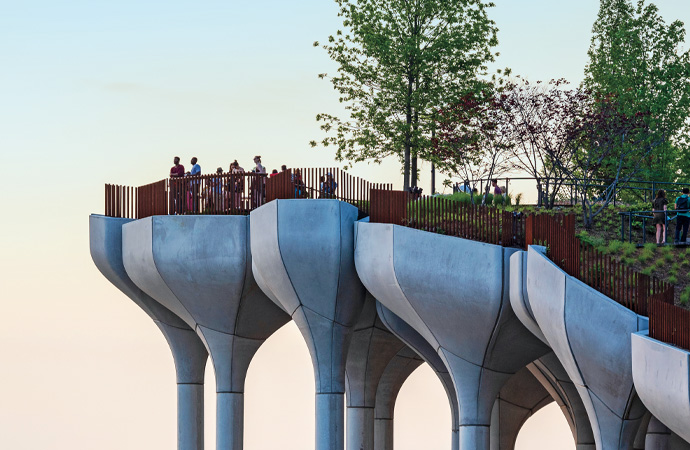
Little Island New York City / Photo: Courtesy of Timothy Schneck
When Heatherwick was commissioned to rework the iconic mid-century Routemaster bus in London, he used radial patterns on the staircases and diagonal glazing. Today, most primary-red double-deckers on the streets of the city share something of the Heatherwick aesthetic. “When we worked on that project, there hadn’t been a bus specifically designed for London for 50 years,” he says. “Transport is driven by metrics, but millions of Londoners spend weeks and months of their lives on these buses, and I wanted it to contribute something positive, the same way the Moscow and Stockholm subway do for their users. Those are a riot of joy. The stairs are narrow on the Routemaster, but we looked at how we could create theatricality, and the sense you’re sweeping down the stairs in a stately home.”
All About The Emotions
Heatherwick is now a marquee name, with museum retrospectives under his belt, but his smaller projects are as fascinating as the landmarks. The Longchamp store he designed for New York’s SoHo was dramatic enough to warrant a visit in its own right. You may not want to buy a Longchamp bag, but you want to experience the energy of the space. The boutique’s staircase looks like a cell plucked from an animation, as if each step is part of a swirling, billowing ribbon. “Our focus at the studio is in the hyperphysical,” he says. “As the digital revolution has played through, with incredible technology appearing, there was a feeling that all things physical would lose their meaning, but now they’re more valuable than ever.” With so many online retailers in trouble, the luxury brick-and-mortar flagship certainly has its place in the 21st century, and the Longchamp space continues to enjoy some of the fame of its architecturally significant neighbor, the Prada store near the corner of Prince and Broadway, designed by Rem Koolhaas in 2001.
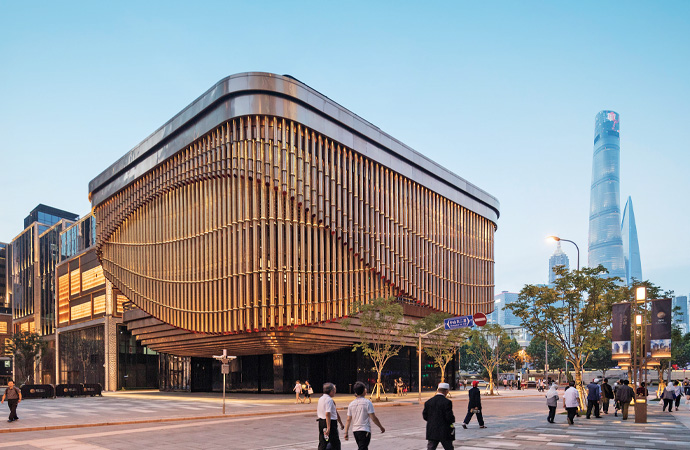
Bund Finance Centre, Shanghai / Photo: Courtesy of Laurian Ghinitoiu
Heatherwick says in Humanize he has enthusiasm for the potential of AI (particularly because we now lack the actual artisans who created the cathedrals of the past), but he’s all about the emotions you get from reality, not a metaverse. And while technology gives, it also takes away. “Streets become scary places if we aren’t on them,” he says. “Technology has created reasons for us to stay home and study or work. We can shop online and have things delivered. Our rhythms and routines have been broken. The incredible revolution that seemed like it was going to democratize and enable us to see each other more now divides us. We are scared of one another, but physical proximity creates civility.”
A Good Backdrop to Public Life
His Humanize philosophy is all about, as the name suggests, how individuals respond to architecture and objects. He has assembled a persuasive body of data, detailing how humans rely on visual complexity to feel not just good, but safe. “When the brain is deprived of information from its environment,” he writes, “it takes it as a signal that something is wrong. It panics. It switches the body to a state of alert, raising its readiness to deal with danger.” Heatherwick has time for some of the best works of modernism, calling Le Corbusier’s Notre-Dame du Haut chapel in Ronchamp “sublime…alive with both order and complexity.” But he sees the stubborn rigors of modernism as being literally hazardous to our health. “The worst architecture you’ll ever come into contact with is in the form of hospitals and care homes,” he says. “That goes back to what I said about the need for a conversation. No one listens to the patients.” There is now a movement toward Healing Architecture in the industry, acknowledging the need for patient proximity to nature, with a view to better treatment results.
#Breaking: We’re excited to share a preview of Terminal 5, Singapore’s new terminal that is mega-yet-cosy! 🌟 T5’s design features overlapping roof leaves creating cosy spaces. The ground transportation centre connects rail, bus, and other services seamlessly! pic.twitter.com/BCO9mcKWLL
— Changi Airport (@ChangiAirport) May 14, 2025
Urban planning is an area in which Heatherwick wants to see radical change. In his book, he offers evidence that soulless identikit housing can lead to depression, friction and even civil war. His work encourages people to engage with one another, and he has become the designer of choice for projects that involve vast numbers of users. His new terminal for Changi Airport in Singapore will add capacity for 50 million passengers per year but is being sliced up into “human-scale” areas rather than amorphous zones under one vast roof. It’s Heatherwick’s third project in the city, after the Nanyang Technological University Learning Hub and the Eden apartment tower, with its rounded garden balconies.
In New York, Little Island, built on what was originally Pier 55, features a set of miniature parks connected by platforms and inclines. Like the High Line, it has become a magnet for tourists. But isn’t this yet another case of a private development pretending to be public? “People don’t really understand the rules of public spaces,” Heatherwick says. “You can’t protest or drink on the street outside my office. But privately created public spaces can have less restrictions. When I worked on Coal Drops Yard [a shopping center in King’s Cross], that had been an area that many people didn’t feel safe in. Today, the feeling that there are eyes on the street makes people feel good about being there. It’s a nuanced discussion. Little Island is part of the Hudson River Park Trust, and the spirit of what they are doing is entirely public-centered. I often find that the insides of a building are fine, but the outsides are not generous to society. And I want to create a good backdrop to public life.”
Risk Factor
Being in such commercial favor comes with risk. Heatherwick’s planned Garden Bridge in London was scrapped in 2017, collapsing under the weight of media scrutiny over public funding and former mayor Boris Johnson’s suspicious refusal to collaborate with a review of the project. Last autumn, his Vessel reopened to the public in Hudson Yards in New York. It had been closed for three years, after a horrific spate of suicides. “We designed a netting solution that is beautiful and in the spirit of the original structure,” he tells me. No designer wants to be handed a poison chalice, which is what Vessel turned out to be.
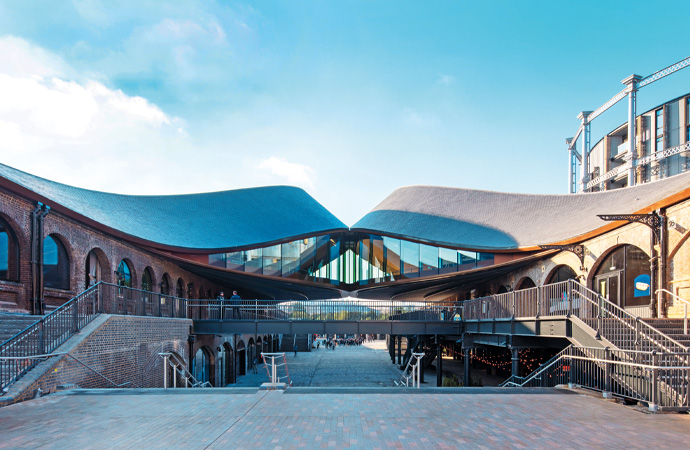
Coal Drops Yard, King’s Cross, London / Photo: Courtesy of Heatherwick Studio/Luke Hayes
The events were, of course, compounded by an intense feeling of violent ill will from New Yorkers to Hudson Yards. Sample headlines plucked from many in The New York Times about the development: “Is This the Neighborhood New York Deserves?” and “Another Reason to Hate Hudson Yards.” It will be interesting to see how Vessel endures. Feelings toward landmarks change over time. Heatherwick’s beloved Sagrada Família in Barcelona, which will finally be finished in 2026, was called “one of the most hideous buildings in the world” by George Orwell in his 1938 book, Homage to Catalonia: “The anarchists showed bad taste in not blowing it up when they had the chance.”
A New Vision
Some buildings are thrilling from day one: London’s futurist BT Tower was the tallest structure in the capital when it topped out in the 1960s and held the record until 1980. It looked like nothing else in a city shaped by Inigo Jones, Christopher Wren and Giles Gilbert Scott. It was the future. Now it is Grade II-listed and looks like yesterday’s notion of tomorrow. It has been closed to the public for decades. Many older Londoners talk of the restaurant that once revolved at the top in mythical terms, like the Cloud Club in New York’s Chrysler Building. Heatherwick will be the designer to oversee the tower’s transformation into a luxury hotel under the new ownership of MCR, a company that counts the TWA Hotel at JFK in New York, originally designed by Eero Saarinen, among its properties.
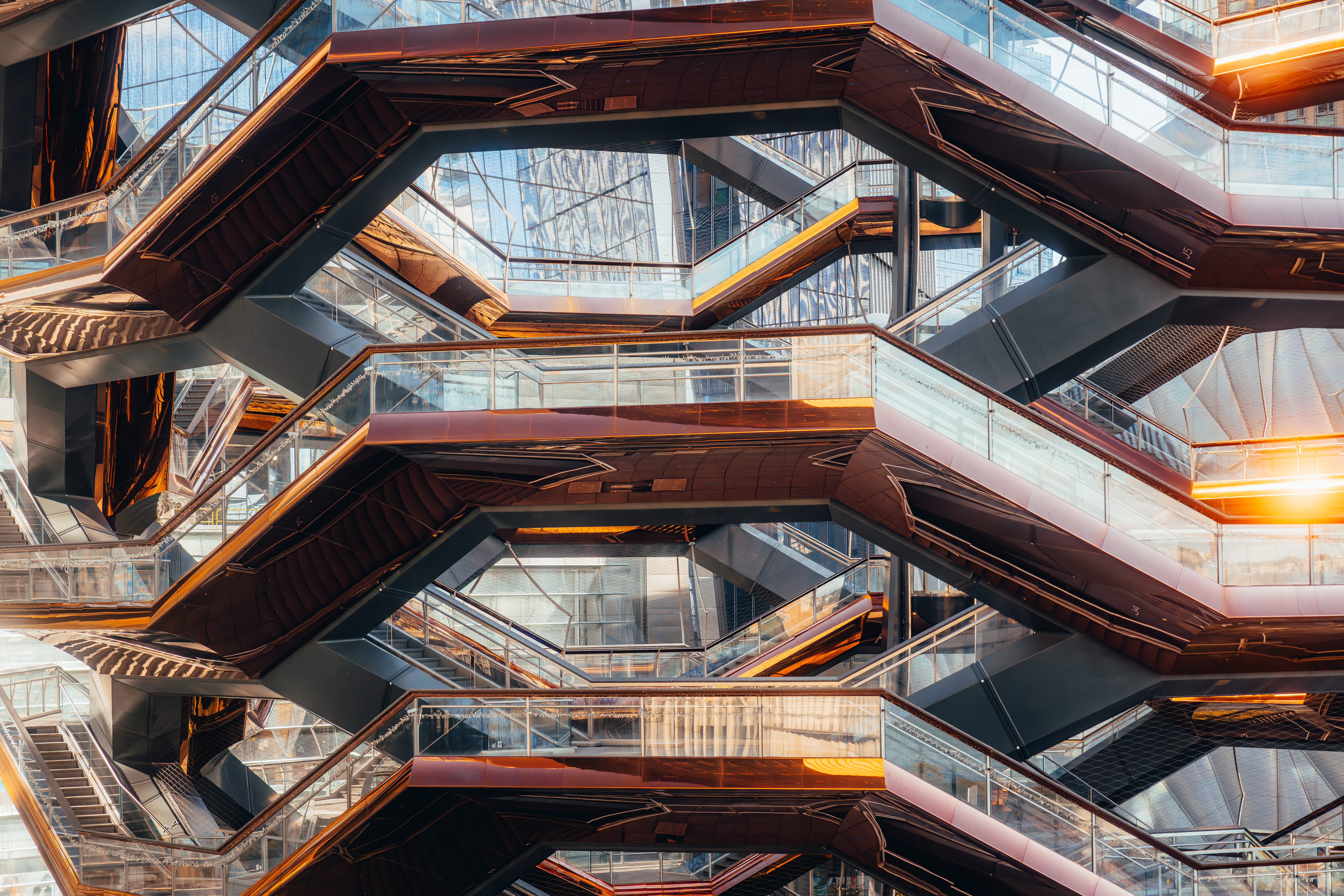
Photo: Courtesy of Getty Images
Design plans are some way off, but Heatherwick knows what he wants to achieve. “Working in Hong Kong taught me a lot about hotels,” he says. “They are a part of public life there. You meet in hotels even if you aren’t staying there. I want to create a place that matters to London and breathe new life into Fitzrovia. The top of that tower means something to all of us, and it is going to turn again. When I think about something like the Pickering hotel in Singapore, it’s a generous hotel to the city. Singapore is better for it existing, and it brings joy. It’s about the move from private to public, and the experience of those transitions.”
Heatherwick’s Humanize mission is about the changing shape of public places—even if they are privately owned. “Private buildings are the walls of public life,” he says. “There’s a lack of joyfulness in public placemaking.” This designer wants to bring joy to the table, as much as he can. He may not be an architect, but he is one of the biggest innovators in architecture today. How does he see himself? “Well, when I was little, I wanted to be an inventor,” he says. “And invention doesn’t have a style.” Heatherwick’s hero, Antoni Gaudí, who also held the power of the curved line above the straight, agreed. As he once said: “Nothing is invented, for it is written in nature first.”
Heatherwick’s style might be deemed, simply, human nature.


